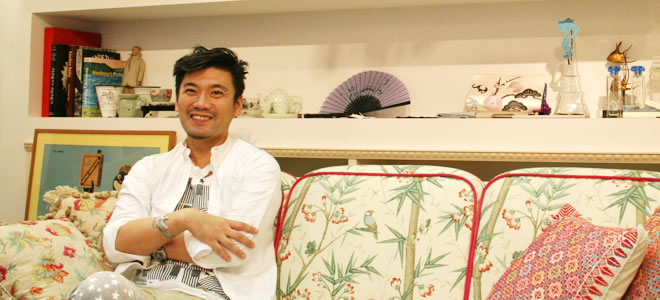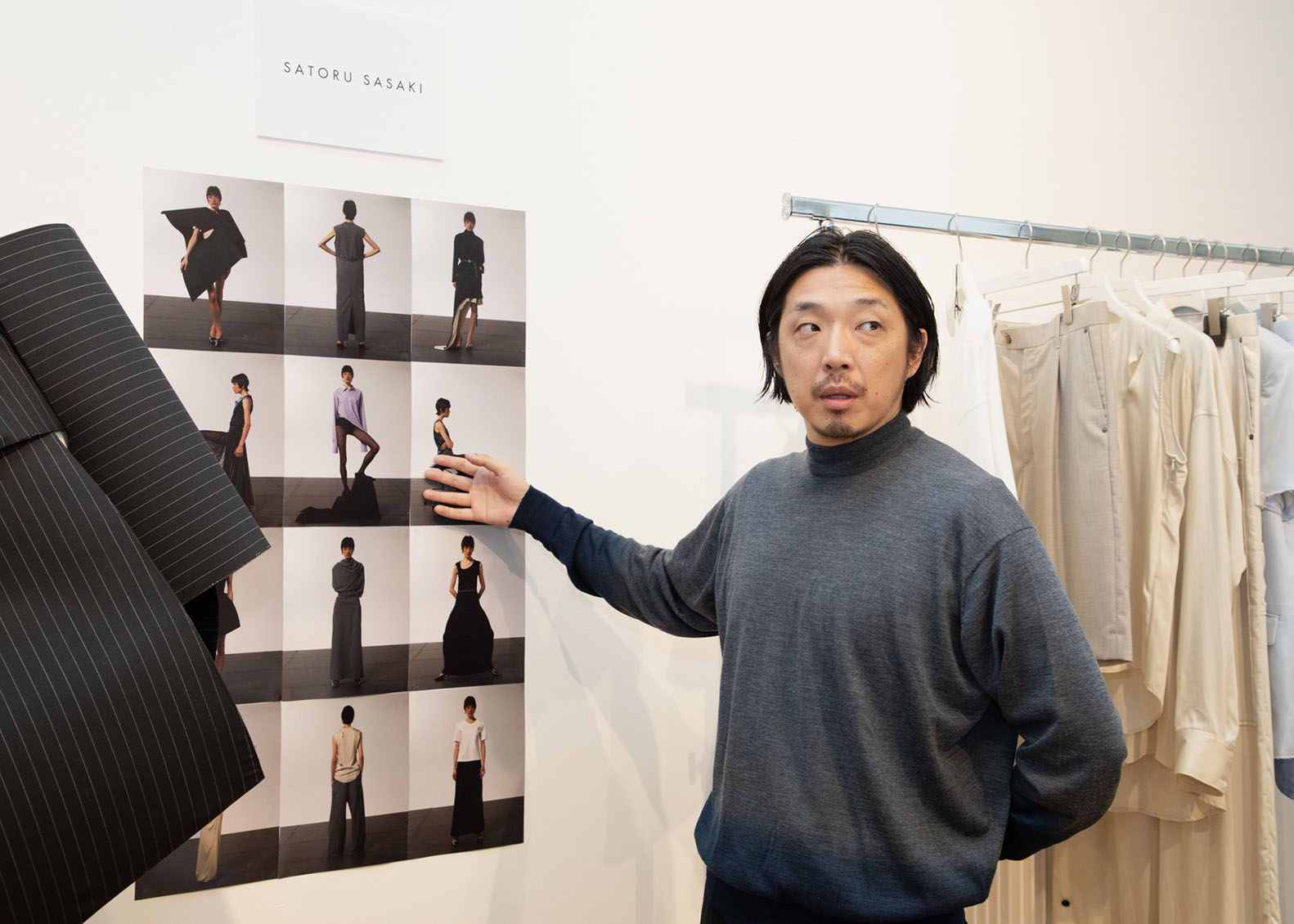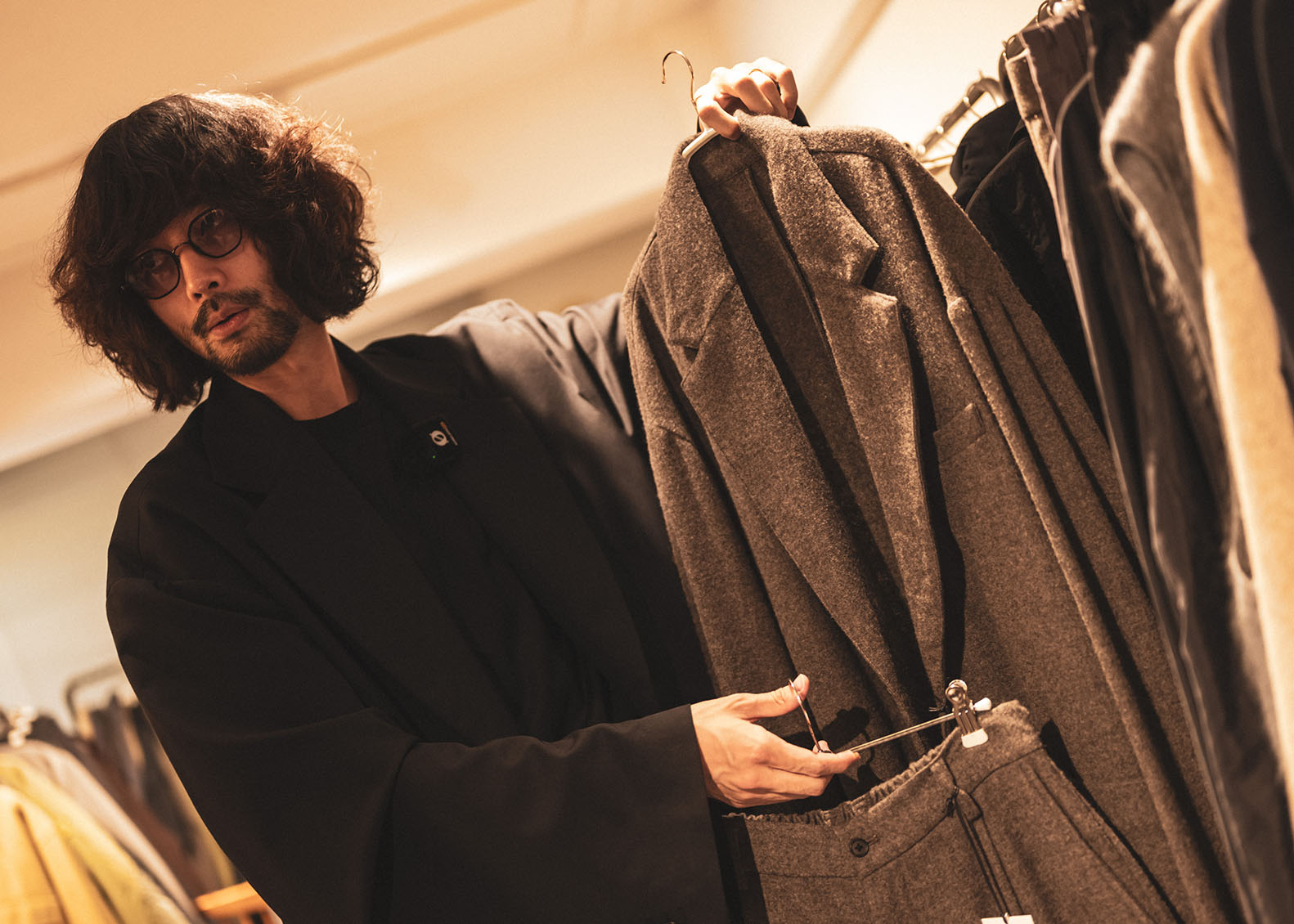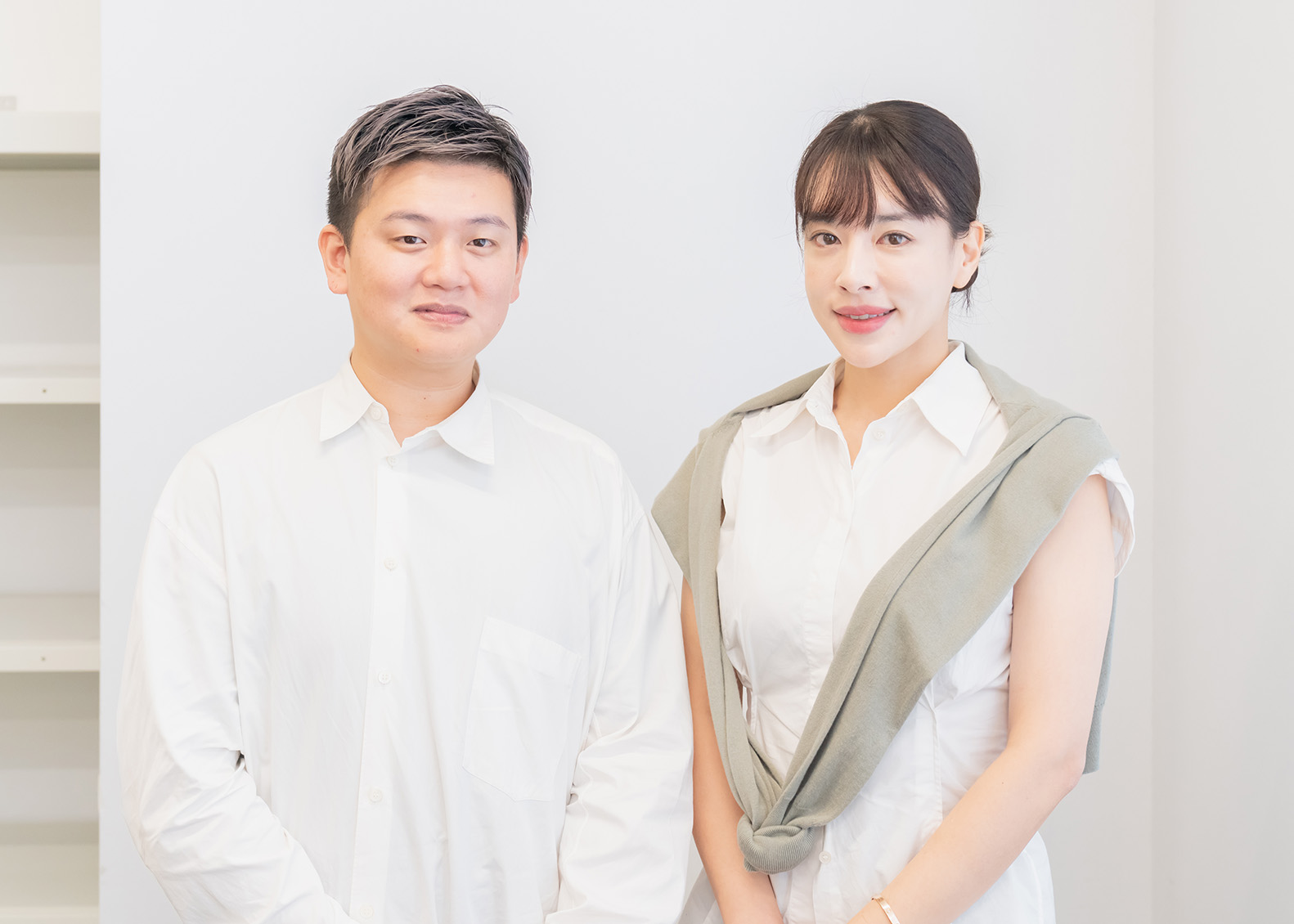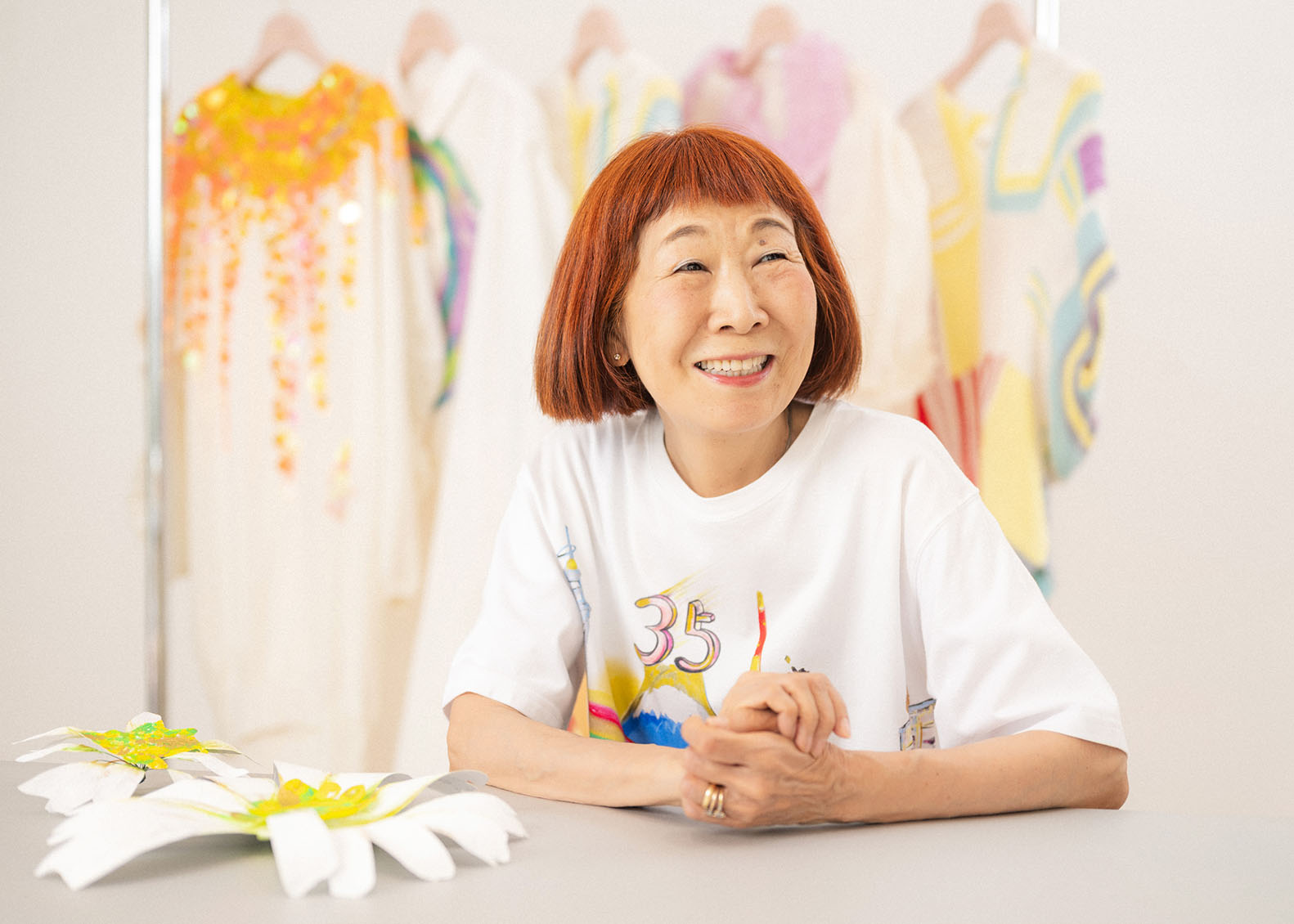KEITA MARUYAMA
The brand Keita Maruyama exudes romance. His creations, which have a sentimental and poetic world view and are decorated with extremely detailed handiwork, will make you believe in love at first sight. The theme for his latest spring-summer collection that was announced the other day at the Tokyo Collection Week was “Sweet Memories.” What was the message that the designer Keita Maruyama wanted to convey on the runway showered with flower blossoms? We interviewed Mr. Maruyama at his Aoyama boutique, which had the air of an apartment in Paris.

What motivated you to choose this theme?
Maruyama:I was not motivated by anything in particular. Whenever I make something, I always search within myself for my mood and feelings at that moment. Sometimes I finish the work in three days; sometimes it takes me three months. In any case, I write down many words on a memo pad while searching within myself, and find a theme based on the words I have gathered. I guess it’s more like a title than a theme.
What kind of image came to you first?
Maruyama:The image that I had was of strolling leisurely along a path lined with cherry blossom trees on a bright and clear day, and when I look up at the sky, I feel an overwhelming sense of yearning that is neither sad nor lonely. I wanted to make a collection based upon this image.
How very emotional.
Maruyama:I believe that the designers should be able to express their styles more freely. In the current times, business is tough. So I feel that the media, including fashion magazines, appear to be lost. They all seem to be colliding into this wall of business, and hesitantly heading toward the same standard direction. I myself am not avant-garde, nor am I a type of designer that insists on extreme creativity, incorporates strong messages into clothes, or creates trends. What I value is to make clothes that satisfy the mind or make you feel happy and excited. Peoples’ moods differ depending on what they wear. I think this collection expresses this fact in an easily understandable manner.

The models were all wearing Japanese wooden clogs.
Maruyama:This was not necessarily because I wanted to create a Japanese image. At the end of the day, however, the only things that exist in me are things that I have experienced. I was born in Japan in the mid 1960s, and raised here. It’s just that for me, Japan was what connected to the sweetest and most wistful feelings within me.
You’ve started a new project in which you collaborate with female designers of 13 brands who are mainly active in Tokyo in creating items and sell these items in a mobile store called “Beauty Bar.” Can you tell us about this project?
Maruyama:First of all, I was interested in women that I think have this new sense of life = “women that develop their businesses with a new methodology that is different from our own.” There are many people that create items with values that are the same as my own, but I decided that it would be interesting to work and interact with people that have different values. The women that participated in this project all love fashion and cute things. In addition, they all have a life plan. In my generation, a lot of people worked like mad and missed the chance to get married, but these women are very realistic and “only do things that can succeed as a business,” but also have kids and then work hard after having kids. This sensation was very new for me. However, if there was one thing that these women were lacking, it would be that they are too confined within the boundaries of business, and are narrowing their own range of creativity. This may just be what is typical of girls raised in 109, but I think it’s too much of a waste to stop there. I also wanted to convey to them that “I’m also making clothes for you” and wanted to appeal to their customers as well.

The first “Beauty Bar” was in the Isetan in Shinjuku, but we plan to have mobile shops in many different places in the future. It would be nice if we can do shows together or plan parties in the future. I also think it would be interesting to work with more avant-garde designers, or with artists, musicians, and life-style brands. I think the feeling of “having fun together” is important.
What do you think of the recent fashion environment in Japan?
Maruyama:In the current times, you cannot do things alone. Doing things that are difficult to do yourself with two or three or many other people will form a message in itself. Recently, there are few people that can judge an item for what it is. People no longer have an eye for quality; for instance, even if the grocery store sold delicious meat, nobody would buy it, saying “It is better to buy meat at the butcher.” However, if the people producing the item are enjoying themselves, the consumers are certain to enjoy the item too. I would actively like to do things that make the world a more enjoyable place.

By the way, is there anything that you are into at the moment?
Maruyama:I know I’m a bit behind on the trend, but I’m into Korean dramas (laughs). To be honest, it is really easy to see how the story develops, and the quality isn’t all that high, but the portrayal of people is amazing. The same goes for music. When I go to a BIG BANG (Korean male idol group) live concert, the female fans are dressed really fashionably and look really cute. Seeing that, I felt that “Smart Japanese girls have given up on Japan.” It is clear that Korean music exceeds Japanese music. At this rate, their fashion will also overtake ours. What is lacking in Japan at the moment may be “greed”. People are probably too scared about being hurt when they take a shot at something and fail. This is probably where the feeling of “not feeling secure unless you belong to a category” comes from.

What would you say were the clothes that changed your life?
Maruyama:In my case, I make a living out of clothes, so rather than say that it changed my life, I feel like they have always helped me along and formed what I am today. From when I was quite young, I always wanted to become a designer. My father was a professional baseball player, and my mother always loved clothes since she was young, but I don’t think that influenced me much. I loved girly things from when I was little, and I would pretend to be a judge for the Kohaku Uta Gassen music show in front of the TV while watching the costumes (laughs).
The designer that I admired was Kenzo Takada. When I was in middle school, I saw one of Kenzo’s shows on TV, and I thought to myself “I want to do something like this myself!” Also, one of Kansai Yamamoto’s boutiques was located near my house, and I wore Kansai’s clothes starting from when I was in high-school. I also loved Yves Saint-Laurent when I was a student.

There was a lot of momentum in the fashion world at the time.
Maruyama:The so-called DC boom that was popular in the 1980s was a culture unique to Japan. This was the era in which we saw the emergence of a splendid array of fashion stars internationally as well, such as Jean Paul Gaultier and Thierry Mugler. We may be the last generation in Japan that has the intense fashion image and classic sense that we received from these fashion stars. I would like to continue creating such items in the future, and would like to pass on the things I learned from my seniors to the next generation.

